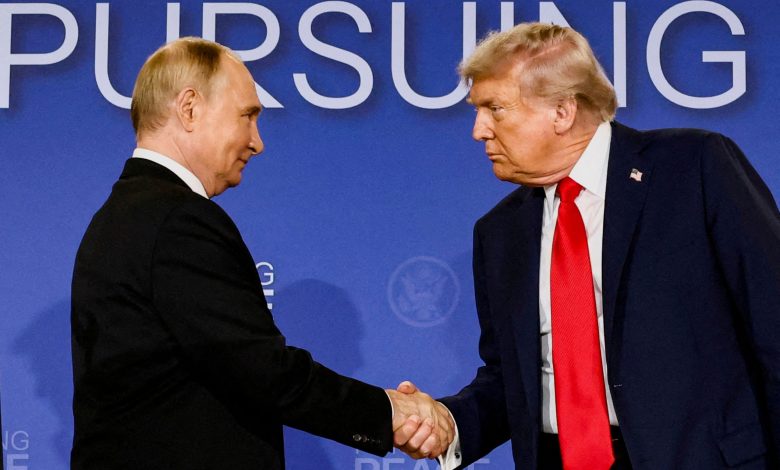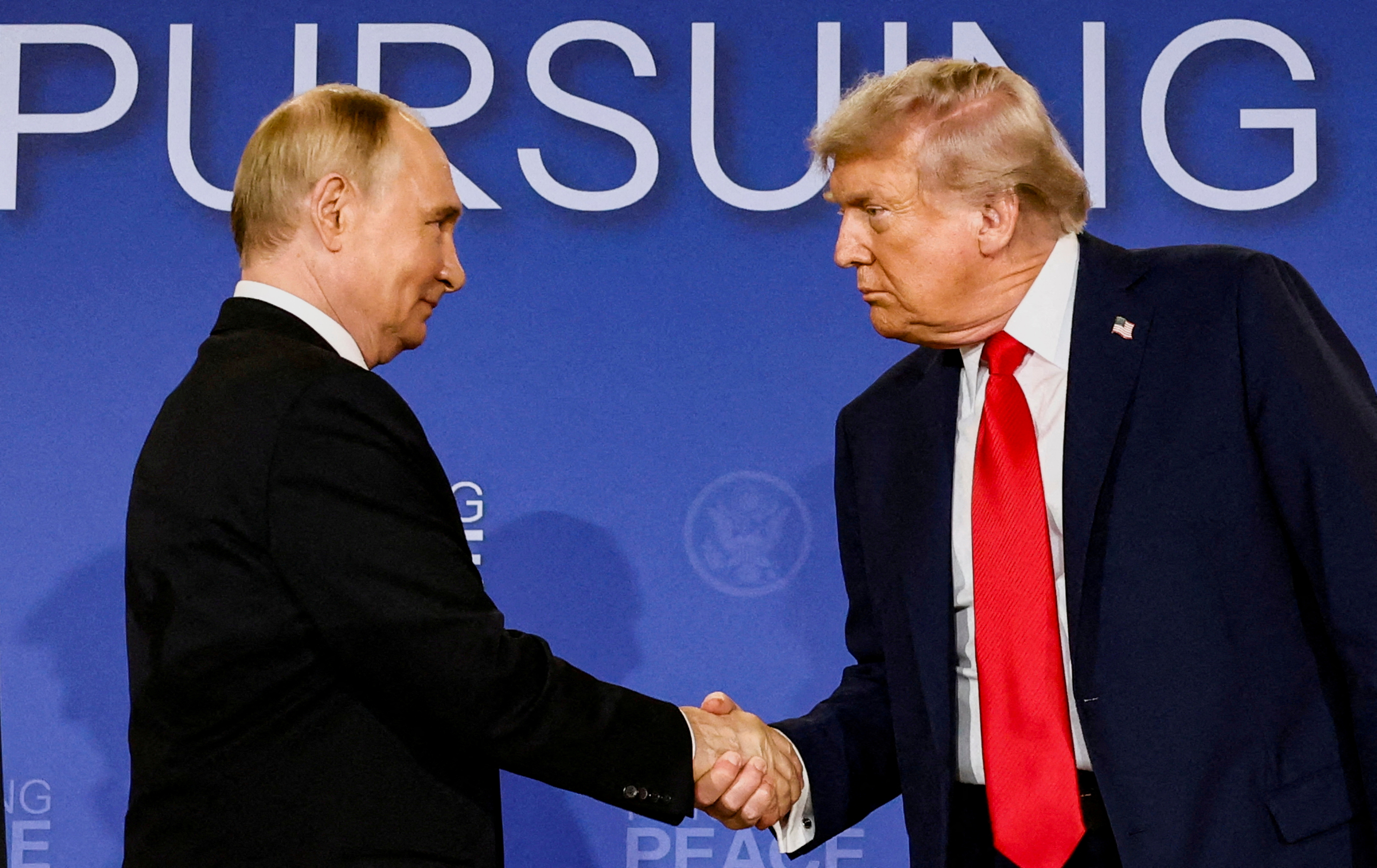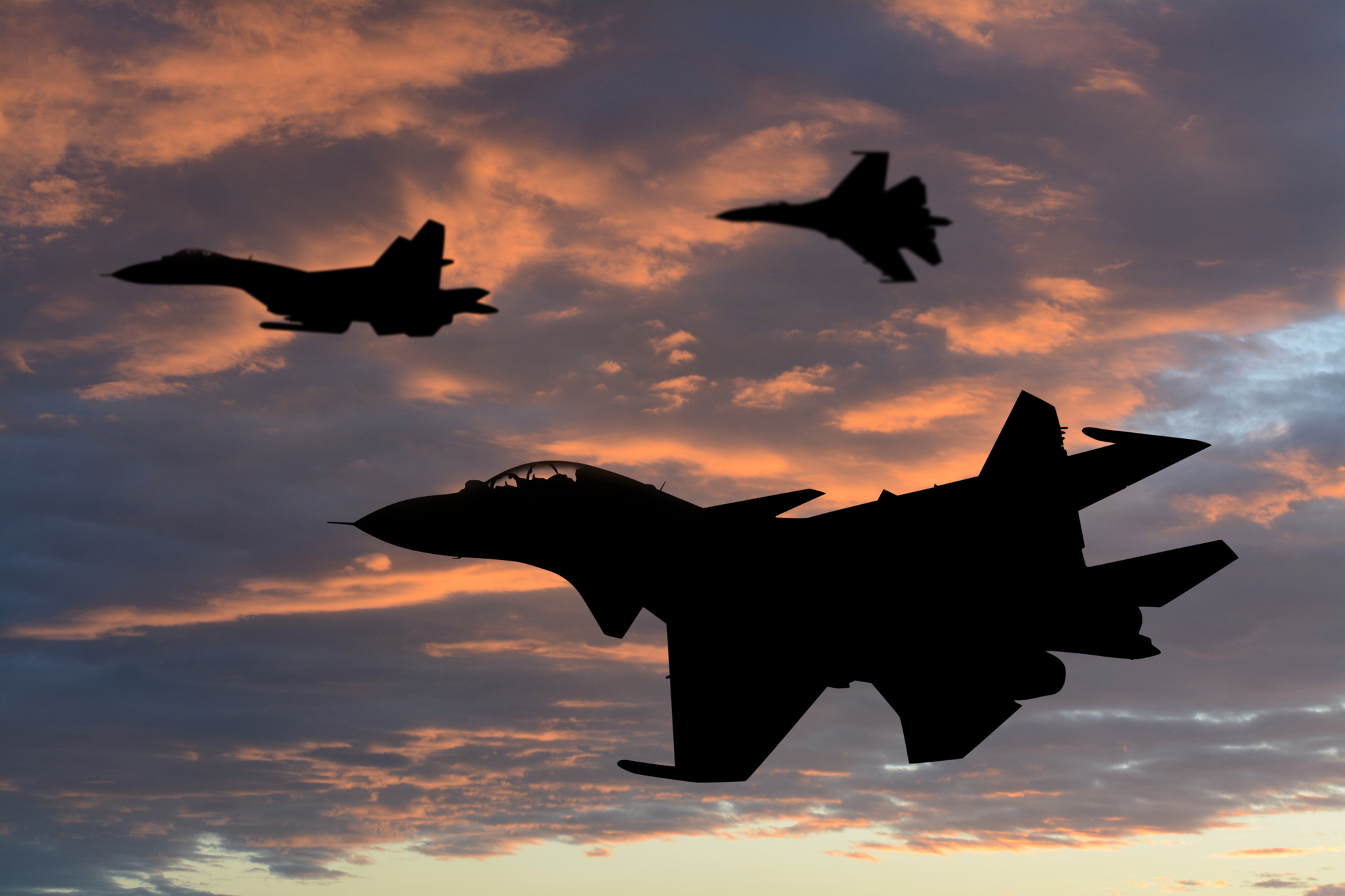
Trump cancelled Budapest meeting as Putin refused to back down on Ukraine

The United States cancelled a planned Budapest summit between President Donald Trump and Russian President Vladimir Putin following Russia’s firm stance on hardline demands regarding Ukraine, the Financial Times reported on Friday.
The decision came after a tense call between the two countries’ top diplomats, the Financial Times said, citing people familiar with the matter.
Reuters could not immediately verify the FT report. The White House did not immediately respond to a request for comment. Officials in the Russian government were not immediately available for comment.
Plans for a summit in Budapest this month between Trump and Putin were put on hold after Moscow stuck to demands, including that Ukraine cede more territory as a condition for a ceasefire.
Trump has backed Ukraine’s call for an immediate ceasefire on current lines.
Days after Trump and Putin had agreed to meet in the Hungarian capital to discuss how to end Russia’s war in Ukraine, the Russian foreign ministry sent a memo to Washington underlining the same demands to address what Putin calls the “root causes” of his invasion, which include territorial concessions, a steep reduction of Ukraine’s armed forces and guarantees it will never join NATO, the newspaper reported.
The U.S. then cancelled the summit following a call between Russian Foreign Minister Sergei Lavrov and U.S. Secretary of State Marco RubiRussia has in recent months attacked Ukraine with a cruise missile whose secret development prompted Donald Trump to abandon a nuclear arms control pact with Moscow in his first term as U.S. president, Ukraine’s foreign minister said.
Andrii Sybiha’s comments are the first confirmation that Russia has used the ground-launched 9M729 missile in combat – in Ukraine or elsewhere.
Russia has fired the missile at Ukraine 23 times since August, a second senior Ukrainian official told Reuters. Ukraine also recorded two launches of the 9M729 by Russia in 2022, the source said.
Russia’s defence ministry did not immediately reply to a written request for comment.
ONE MISSILE FLEW 1,200 KM, SOURCE SAYS
The 9M729 led the United States to quit the Intermediate-Range Nuclear Forces (INF) Treaty in 2019. Washington said the missile was in breach of the treaty and could fly far beyond its limit of 500 km (310 miles) although Russia denied this.
The missile, which can carry a nuclear or conventional warhead, has a range of 2,500 km, according to the Missile Threat website produced at the Center for Strategic and International Studies in Washington.
A military source said a 9M729 fired by Russia on October 5 flew over 1,200 km to its impact in Ukraine.
“Russia’s use of the INF-banned 9M729 against Ukraine in the past months demonstrates (President Vladimir) Putin’s disrespect to the United States and President Trump’s diplomatic efforts to end Russia’s war against Ukraine,” Sybiha said in written remarks.
He told Reuters that Kyiv supported Trump’s peace proposals and that Russia should face maximum pressure to push it to peace, saying that boosting Ukraine’s long-range firepower would help persuade Moscow to end its war in Ukraine.
Ukraine has urged Washington to provide it with long-range Tomahawk missiles that were not banned under the INF because they were only sea-launched at the time. Russia says this would be a dangerous escalation.
‘AN ISSUE FOR EUROPEAN SECURITY’
Use of the 9M729 expands Russia’s arsenal of long-range weapons for striking Ukraine and fits a pattern of Moscow sending threatening signals towards Europe as Trump seeks a peace settlement, Western military analysts said.
“I think Putin is trying to ramp up pressure as part of the Ukraine negotiations,” said William Alberque, a senior adjunct fellow at the Pacific Forum think tank, adding that the 9M729 was designed to hit targets in Europe.
Russia tested its nuclear-powered Burevestnik cruise missile last week, and on Wednesday said it had tested a nuclear-powered torpedo named Poseidon.
The White House did not respond to specific questions about Russia’s use of the 9M729. Trump ordered the U.S. military on Thursday to resume testing nuclear weapons, citing “other countries’ testing programs”.
After the U.S. withdrew from the INF treaty, which banned ground-launched missiles with a range of 500-5,500 km, Russia declared a moratorium on deploying intermediate-range missiles. The West said Russia had already deployed some 9M729 missiles.
On August 4, shortly before using the missiles in Ukraine, Russia said it would no longer limit where it deploys INF-range missiles that can carry nuclear warheads.
“If it’s shown that Russia’s using INF-range missiles, which could easily be nuclear, in Ukraine, then that is an issue for European security, not just Ukraine,” said John Foreman, a former British defence attache to Moscow and Kyiv.
MISSILE FRAGMENTS
Ukraine’s foreign ministry did not provide details or dates of the 9M729 strikes.
The senior official said they began on August 21 – less than a week after a Trump-Putin summit in Alaska.
Reuters reviewed images of debris after a Russian attack in which a residential building was hit and four people were killed in the Ukrainian village of Lapaiivka on October 5 – over 600 km from Russian territory.
The images showed that two missile fragments, including a tube containing cabling, were marked 9M729.
Jeffrey Lewis, Distinguished Scholar of Global Security at Middlebury College, reviewed the images with analysts.
He said the tube, engine and engine panelling were consistent with what he expected the 9M729 to look like and that the markings made a match even more likely.
FIRING FROM FURTHER BACK
Russia has various missiles that can reach across Ukraine, including the sea-launched Kalibr and air-launched Kh-101, but Lewis said the 9M729 offers something slightly different.
“This gives them slightly different attack axes, which is difficult for air defences, and it increases the pool of missiles that are available to the Russians,” Lewis said.
The INF prohibited ground-launched missiles because the launchers are mobile and relatively easy to conceal.
Douglas Barrie, Senior Fellow for Military Aerospace at the International Institute for Strategic Studies, said Russia could use the 9M729 to conduct ground-launched strikes from safer locations deeper inside Russia.
Russia would also benefit from testing the system in a battlefield environment in Ukraine, though 23 uses would imply a military purpose, said Barrie.o, after which Rubio told Trump that Moscow was showing no willingness to negotiate, the FT report added.
Ukrainian President Volodymyr Zelenskiy said this month that while Ukraine is ready for peace talks, it will not withdraw its troops from additional territory first as Moscow demanded.


